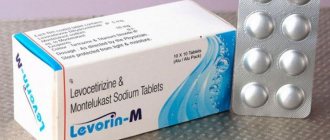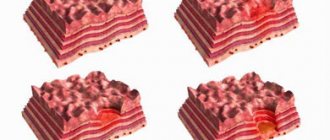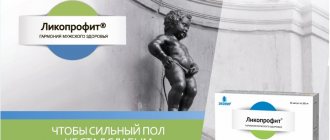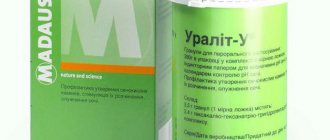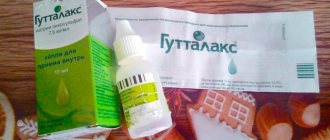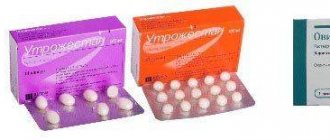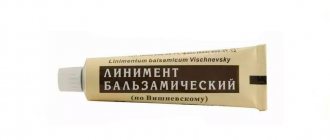Alaminol is a Russian disinfectant. It is produced in the form of a concentrate, which has a mild odor and a blue tint.
The disinfectant Alaminol is widely used for disinfection measures in hospitals, clinics, maternity hospitals, catering establishments, beauty salons, and also in places where children often visit.
Disinfectant Alaminol does not contain chlorine. The main components in the composition - glyoxal and alkyldimethylbenzylammonium chloride - are aimed at combating bacteria (including tuberculosis), fungi of the genus Candida, herpes and other viral infections. Like other chemicals, it should be stored out of the reach of children and pets. Uncontrolled and improper consumption can lead to poisoning, long-term disability and cause irreparable harm to health.
Pharmacological action of Alaminol
Alaminol is an antiseptic that can be used for disinfection in:
- Dentistry;
- Medical and preventive institutions;
- Hairdressing salons;
- Beauty salons;
- Children's institutions;
- Hotels;
- Canteens.
Alaminol solution during disinfection is effective against:
- Mycobacterium tuberculosis;
- Fungi of the genus Candida;
- Most bacteria, including various pathogens of nosocomial infections;
- Dermatophytes;
- Various viruses, including entero-, polio-, rotaviruses, acute respiratory viral infections, HIV infections, herpes, pathogens of parenteral viral hepatitis.
Composition of Alaminol
The product is a liquid concentrate of bright blue color (sometimes with a greenish tint) with a faint odor. Components included in the disinfectant and their concentration:
| Substance name | Concentration |
| Glyoxal | 8% |
| Alkyldimethylbenzylammonium chloride | 5% |
| Purified water | 87% |
| pH concentrate, dye | Minor content |
Indications for use of Alaminol
According to the instructions, Alaminol is used for:
- Disinfection of products used for medical purposes;
- Disinfection of premises, furniture, surfaces, equipment, napkins, dressings, disposable linen (before disposal), various items used for patient care;
- Pre-sterilization cleaning of endoscopes and instruments supplied with them.
Alaminol solution is also successfully used during seasonal epidemics when cleaning in public catering establishments.
In addition, regular use of Alaminol helps prevent the proliferation of mold fungi in premises (residential and non-residential).
REGISTER OF DISASTERING PRODUCTS
print version
Alaminol for disinfection and PSO
FSUE "GNTs"NIOPIK", Russia All disinfectants from this Manufacturer...
| Alaminol Alaminol plus Bianol ADS-521 | Alpinol Maxi-Sept Aqua Maxi-Steril Aquaminol Forte | Maxi-Dez M Maxi-Dez Aquaminol Aquaminol Spray |
FSUE "SSC"NIOPIK", Russia All disinfectants of this Recipient...
| Alaminol Alaminol plus Bianol ADS-521 | Alpinol Maxi-Sept Aqua Maxi-Steril Aquaminol Forte | Maxi-Dez M Maxi-Dez Aquaminol Aquaminol Spray |
No. A-18/06 of 2006
HOUR, Aldehyde, Surfactants (surfactants) >
Alkyldimethylbenzylammonium chloride (ADBACH) 5%, Glyoxal 8%, surfactants
Stated hydrogen ion activity (pH) : 2.6 to 5.0
Why do we recommend Septolite-Tetra?
Compare Alaminol and Septolite-Tetra
- the price of the working solution is from 3 kopecks. per liter
- 4 active ingredients
- measuring cap included
Septolite-Tetra
Price: 669.00 rub.
More details
liquid concentrate - 1 dm3, 5 dm3;
in packaging - 1 year, in working solution - 10 days
Price range for disinfectants: from 213.97 rubles. for 1l/kg up to 240.37 rub. for 1l/kg. go to all offers
The average cost of a disinfectant per 1 liter/kg is 352 rubles
The average value for 1 l/kg of concentrate is determined as the arithmetic average for 1 l/kg from several suppliers in different packaging. The cost calculation takes into account only packaging of at least 0.5 l/kg. If there is only one offer, this offer is considered average, provided that its packaging is at least 0.5 l/kg.
The cost of 1 liter of working solution is calculated based on the average cost of 1 liter/kg of concentrate.
| Mode | Conc/exp | Cost of 1 liter of working solution, rub. |
| Disinfection of surfaces by bacteria (excluding tuberculosis) | 1% / 30 min. 3% / 15 min. | 3.52 10.56 |
| Disinfection of surfaces for viral infections | 5% / 60 min. | 17.6 |
| Disinfection of surfaces for candidiasis | 3% / 90 min. 5% / 60 min. | 10.56 17.6 |
| Disinfection of surfaces against dermatophytes | 3% / 60 min. 5% / 30 min. | 10.56 17.6 |
| Disinfection of surfaces for tuberculosis | 3% / 90 min. 5% / 60 min. | 10.56 17.6 |
| Disinfection of medical devices for bacterial, viral infections and candidiasis | 8% / 60 min. 10% / 30 min. | 28.16 35.2 |
| Disinfection combined with PSO medical devices for bacterial, viral infections and candidiasis | 8% / 60 min. | 28.16 |
| Pre-sterilization cleaning of medical devices | 1.5% / 30 min. | 5.28 |
| TLD endoscopes | No mode | — |
| Sterilization of medical devices | No mode | — |
| Blood disinfection | No mode | — |
| Disinfection of sputum | No mode | — |
| Disinfection of feces | No mode | — |
View all application modes...
| Mode of application | Volume | Unit change |
| Consumption of the product on the surface by wiping | 150 | ml/m2 |
when administered into the stomach - 3; when applied to the skin - 4; working solution - 4
Bacteria - Mycobacterium tuberculosi, Gram-negative bacteria, Gram-positive bacteria;
Viruses -
Influenza, Parainfluenza, Other pathogens of ARVI;
Pathogenic fungi -
Dermatophyton, Candida, Molds;
Cleaning properties;
Health care facilities, catering establishments, communal facilities (baths, swimming pools, hotels, public toilets, etc.)
Underwear, Bed linen, Flexible endoscopes, Rigid endoscopes, medical devices made of metals, rubber based on natural and silicone rubber, glass, plastics, conventional medical devices, disposable medical devices before disposal, Instruments for endoscopes, Dental instruments, Surgical instruments, Honey. waste from textile materials (cotton and gauze swabs, gauze, bandages), Indoor surfaces, Furnishings, Patient care items, Sanitary equipment, Cleaning equipment
View the registration certificate of the disinfectant on the official website fp.crc.ru
NIOPIK", Russia...
Suppliers' offers for the disinfectant Alaminol (the price is current today)
| Unit volume | Packaging characteristics | Per item | For 1l/kg of concentrate | Supplier of the goods | Contacts | Supplier price date |
| 1 l | 352.00 rub. | Disinfectant store | tel. | 23.04.2015 | ||
| 3 l | 966.00 rub. | Disinfectant store | tel. | 23.04.2015 |
How to use Alaminol
A 1% solution of Alaminol is used to disinfect and prevent the spread of infections of bacterial origin (with the exception of tuberculosis). As a rule, it is used to wipe surfaces, sanitary equipment, and patient care items (including products made of plastic, rubber, glass and metal).
3% and 5% solutions of Alaminol are used for the same purpose as the 1% solution. In addition, it is used to treat care items, surfaces, equipment, linen and equipment for candidiasis, tuberculosis, viral infections and dermatophytosis.
According to the instructions, 5%, 8% and 10% solutions of Alaminol are recommended to be used by immersion in the solution to disinfect medical equipment for viral, bacterial and fungal diseases, as well as for tuberculosis and candidiasis. These solutions are also used in dentistry - for processing plastic, glass, instruments, and metal objects. Rubber products are treated with 8% and 10% solution of the product.
5% and 8% solutions of Alaminol are used for pre-sterilization cleaning (washing, soaking and rinsing), disinfection of various medical products (with the exception of endoscopes and other instruments that come with them).
The instructions define how to dilute Alaminol for various types of disinfection. For antiseptic treatment, 1%, 1.5%, 3%, 5%, 8%, 10% solutions are used. To obtain a 1% solution, dilute 10 ml of concentrate in 1000 ml water, 1.5% solution - 15 ml in 1000 ml water, 3% solution - 30 ml in 1000 ml water, etc.
It is necessary to dilute Alaminol while wearing rubber gloves, and you should also avoid getting it in your eyes. Containers for immersion disinfection should be kept closed and stored separately from other medical supplies.
According to the instructions, diluted Alaminol can be used repeatedly for 10 days in cases where the appearance has not changed (turbidity or color change).
Storage conditions and periods
The antiseptic must be stored in a dry and dark room at a temperature no higher than 35°C and a relative humidity of no more than 75%. Do not expose it to heating equipment or direct sunlight. Failure to comply with storage conditions may lead to deterioration in quality and loss of disinfectant effect. The bottle with the concentrate must be tightly closed with a screw cap to avoid volatilization of chemically active substances. It should be taken into account that the product freezes at temperatures below -5°C, but after defrosting it retains its beneficial properties.
The date of manufacture and end use is indicated on the label on the back of the container. The shelf life of the drug is 1 year, subject to storage rules. A 1-10% solution prepared from concentrate can be used for 10 days.
Precautionary measures
Careless handling of the solution can lead to health problems. When using it, follow these rules:
- When working with the concentrated drug, you need to wear rubber gloves and make sure that it does not get into your eyes.
- Containers with solution where objects are immersed for disinfection must be tightly closed.
- You can use the diluted drug throughout the entire shelf life or until it changes its appearance (it becomes cloudy, turns a different color).
Side effects
According to the instructions, the drug has no contraindications. If you use the solution without following precautions, the following side effects are possible:
- In case of contact with the skin, the drug causes irritation and redness. If this happens, the product should be quickly washed off and the affected area treated with an emollient cream. The solution, like any other analogue of Alaminol, cannot be used to disinfect the skin of the hands.
- If the drug gets into your eyes, rinse them and drip sodium sulfacyl 30% (1-2 drops each).
- If you accidentally ingest the solution, drink approximately 0.5 liters of water and 10-20 tablets of activated carbon.
Directions for use and recommended dosage
Before using the drug, it is necessary to prepare an active solution from the initial concentrate. For this purpose, chemically neutral vessels are used:
- made of enamel;
- from glass;
- made of plastic.
The concentration of the finished solution is often 1-3-5% depending on the place of use. Only in the case of disinfection of medical rubber products is a product made with a high content of active ingredients - 8 and 10%.
All measures to prevent contact of the finished solution with the skin, mucous membranes, eyes and oral cavity should be carefully observed.
Treatment of wall surfaces and furniture:
a rag soaked in the prepared solution at the rate of 150 ml per 1 sq. m. surface, used for wiping various surfaces;
Treatment of sanitary equipment:
a brush or rag soaked in the prepared solution at the rate of 200 ml per 1 sq. m of surface, used to process the necessary equipment;
Soaking bedding and other linens:
produced in a container, taking into account the consumption of 5 liters per 1 kg of material. At the end of disinfection, the laundry should be rinsed several times;
Processing patient care equipment:
the equipment is soaked in the prepared solution. At the end of the disinfection process, items should be thoroughly rinsed with water;
Treatment of medical waste:
waste is immersed in a 5% prepared solution for several hours, after which it is disposed of in the established way;
Treating surfaces against fungus:
first, the surface is thoroughly cleaned of mold using any convenient device. After this, the drug is applied to the treated surface at intervals of 15 minutes two or three times. It is necessary to keep the drug for 2-3 hours before further processing.
Properties
Manicure service specialists will tell you how to dilute Alaminol to disinfect manicure instruments. They recommend strictly following the instructions given on the package. Due to this, you can properly dilute the concentrate, obtaining a safe solution for processing equipment.
The drug contains substances that can have a negative effect on pathogenic bacteria and viruses. It is characterized by a tuberculocidal effect. Manufacturers of the concentrate note that it has fungicidal and detergent properties.
Despite the fact that the composition is characterized by a rich odor, it does not irritate the mucous membranes. The liquid may be greenish or bluish in color. After dilution, the composition smells like a cosmetic fragrance.
Since the concentrate has a fairly wide range of effects, it is used in beauty salons, manicure salons, medical institutions and catering establishments. When processing equipment, the risk of possible infection of people with pathogenic microbes is reduced.
Alaminol is suitable for both disinfecting instruments and treating work surfaces. The procedure makes it possible to protect objects from the development of fungal mold.
Benefits of using Alaminol
- This product does not pose any health hazard. Even its vapors are harmless. In case of contact with skin, you only need to rinse it with plenty of water.
- It works quite effectively, since its use for medical instruments is approved.
- Despite its aggressiveness as a chemical substance, it interacts with metal as gently as possible.
- There is no fixing effect.
- The working solution can be used repeatedly.
- Disinfection time ranges from 60 minutes. The main methods of disinfection are immersion and rinsing.
- Alaminol is affordable.
- It is able to cope with fungal infections (dermatophytosis, candidiasis), viruses, bacteria (including tuberculosis pathogens), and mold fungi.
- Has cleaning properties.
- If this substance is stored in a dark, thick glass bottle in a dark and cool place, the bactericidal effectiveness will remain for more than a year.
- The prepared solution can be used for up to ten days or until it becomes cloudy and darkened.
Storage rules in production and commercial premises
The rules for handling disinfectants are regulated by SanPiN 2.1.3.2630-10. The drug is stored on wooden or metal shelves or in cabinets separately from other medicines. The finishing material in the room should not adsorb foreign substances, but should allow sanitary cleaning. The room should be bright, dry, but well ventilated. Store alaminol in its original packaging.
Transportation of the drug is carried out in accordance with the current instructions No. A-18/06. Transportation is carried out by all types of transport in which suitable conditions are created to ensure the safety of the product and packaging. The drug can be transported at temperatures from minus 20 to 35 degrees.
Special instructions for Alaminol
In cases of leakage of Alaminol solution or concentrate, it is necessary to add a large amount of water to the spilled part of the product, or adsorb it with absorbent substances - sawdust, sand, rags or silica gel, and then send it for disposal. It is important to use rubber gloves, an apron and boots, goggles and a universal respirator.
The product can only be discharged into the sewer in a diluted form; its contact with sewage or surface water should be avoided.

